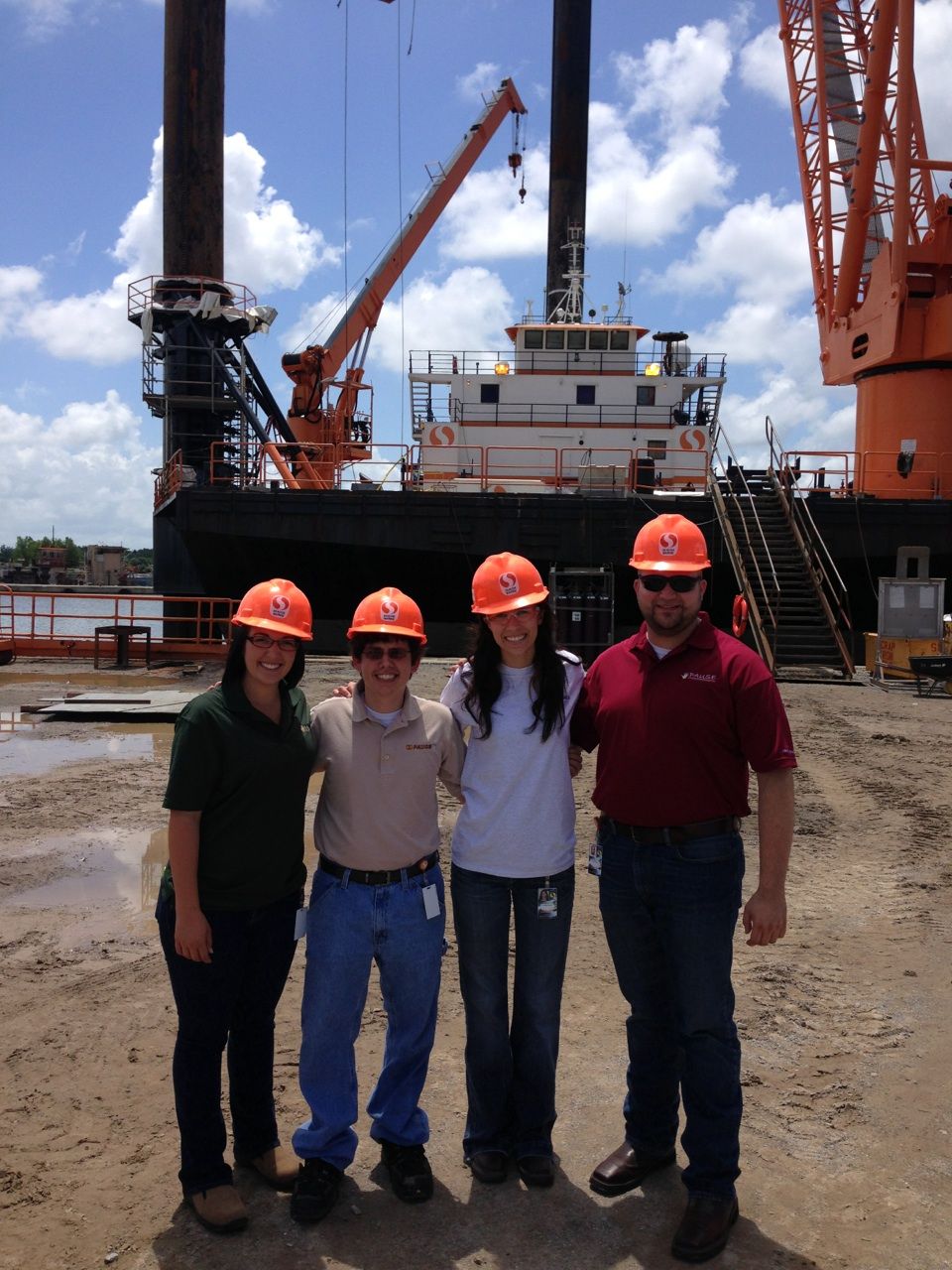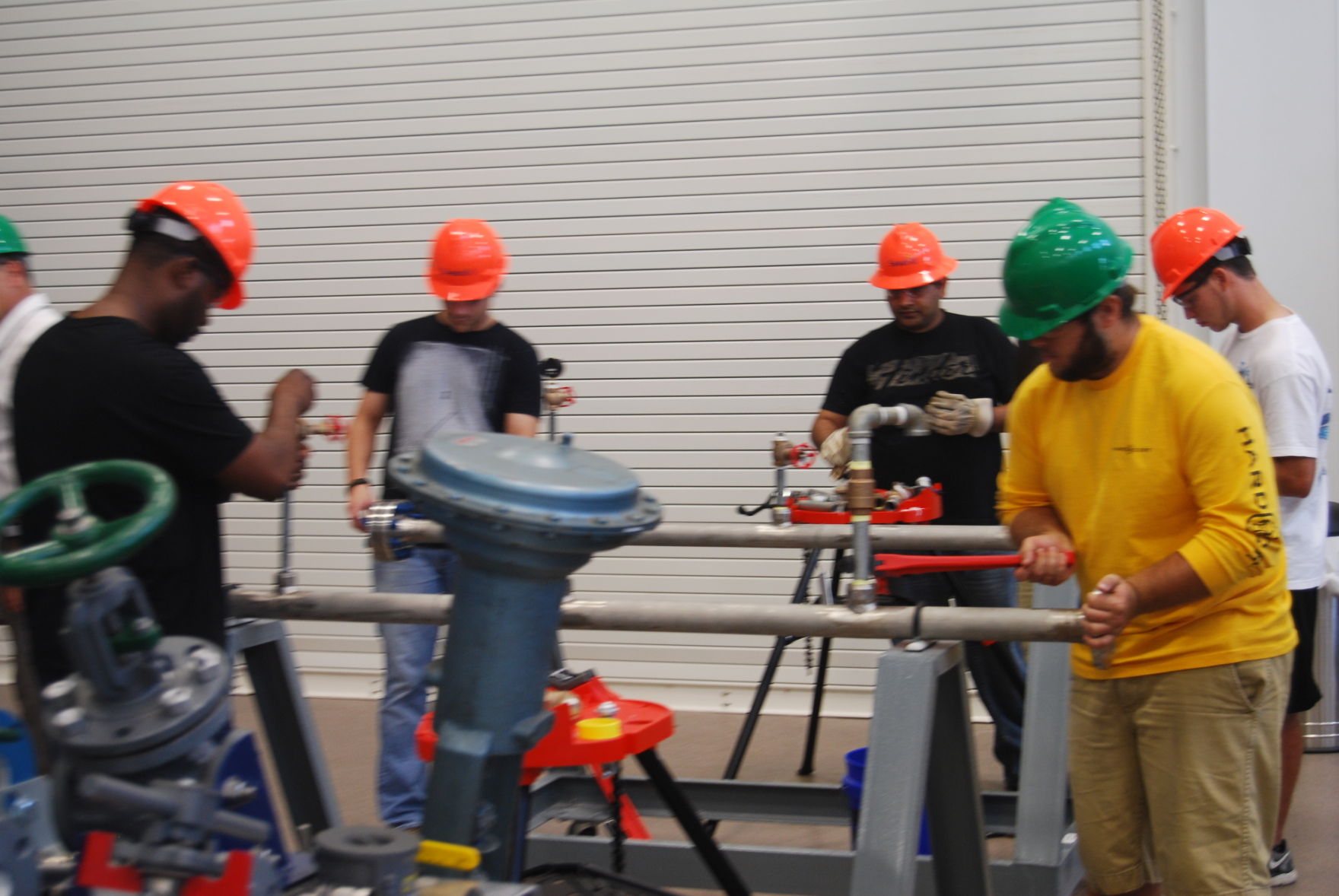
Nicholls maritime management program a first for Louisiana
September 25, 2014EPA declares old east Houma shipyard hazardous area
September 25, 2014Fletcher Technical Community College is making strides to better prepare its students for the safety-driven oil and gas industry.
Fletcher has worked with a number of outside partners, including Nicholls State University, South Central Louisiana Technical College, BP and other oil companies to make sure their students have the necessary foundation for a sustainable career.
“It is the foundation of some workforce training that is coming in the years ahead,” Fletcher Chancellor Earl Meador said. “We have a great facility with a great curriculum and great students who are more than qualified. The next question is how we can take that to the next level.
“As a leader, I am pressed to look not what happens the next day, but look three, five or 10 years out,” he continued. “We have to take the culture of the offshore industry and embed that in our students. How do we take them as land workers and make them offshore workers?”
Fletcher recently celebrated the opening of its BP Integrated Production Technologies facility, which cost $8 million – BP provided $4 million, while the state matched that amount.
“BP has really taken an interest and pride in Fletcher. We work with all different companies,” Executive Director of Institutional Advancement Jessica Thornton said. “We would love to see a field of logos (adorning the facility).
“We constantly work with Shell, Chevron, Danos and all these other companies. BP’s name just happens to be in the name.”
The 30,000-square-foot building sits on the Fletcher campus in Schriever. It is equipped with 10 classrooms, half of which are computer classrooms. The others are lecture rooms.
The facility also includes a 4,000-square-foot lab with over $750,000 worth of lab equipment. The equipment is all technology that students will encounter once they begin working offshore.
“As you walk down the rows, each one of those things represents a piece of equipment they will encounter offshore,” Meador said, pointing down a row of pumps, valves, hydraulic systems and just about any other piece of oilrig equipment.
“We take students who have maybe never seen a machinery environment or even used a screwdriver or wrench in their lives. [By the end of the course] they have to be competent and comfortable,” he said.
Among the pieces of equipment Fletcher’s industrial students use is a pig launcher, a common cleaning device used offshore.
“They can be very dangerous, though. If someone opens it up while it is pressurized, then it can hurt or even kill someone,” Meador said.
“The safety aspect is the driving force behind everything that goes on here. This program is based on safety. The oil industry recognizes that offshore workers need to be trained how to operate equipment because it is a safety factor.”
Virtual measures have been taken teach in-depth methods of how piping works to give them a better understanding of what they are working with.
For example, Director of Research and Development Steven Lee uses software programs 3D Max and Real Flow to demonstrate in depth analysis of how water or oil flows through piping.
“I can create different models and you can see the different tubes throughout the model. Once the model is done, I take it into the simulation software. It builds up the fluid sequences. Both of them are very sophisticated programs,” Lee said. “The fluid simulation has dozens of parameters like viscosity, density, specific gravity, internal and external pressures and internal and external temperatures. There are a lot of physics and mathematical algorithms. You end up with something that looks quite real.”
The program even shows how fluids react to pipe production techniques such as welding. One of the models Lee created showed how the fluids begin to form a ring once it hits the spot where the pipe was welded.
“That is an example of how accurate the programs are,” Lee said.
With safety measures being the highest priority, Fletcher will share assets with South Central Louisiana Technical College in Morgan City with its Marine and Petroleum Safety Training Center.
Request proposals were submitted in early 2012 and Cheramie and Bruce Architects were awarded the bid. The $6.6 million, 25,152-square-foot facility is being constructed at the Fletcher LaMPI campus in Houma.
Local companies and students will use the site for safety training.
“We are about to double or triple what we are producing in terms of marine training in the next few months. It allows us to move our staff where they need to go, catering to our students needs. It is about the employers. That transition of workers to the offshore environment, we have a lot of people that come to us working offshore already,” Meador said. “Those people want to move up to the wheelhouse and become captains. There is an incredible amount of safety training that goes into any worker that goes offshore, like helicopter evacuation, firefighting and water safety techniques.”
The facilities biggest feature is water recovery pool. The deep end will be used for helicopter evacuation training.
The pit of helicopter, which will hang from the ceiling, wil be dropped into the pool and flipped over. It operates similar to the one at the SLC facility in Morgan City.
“We drop about 1,000 students per year in it,” Meador said. “It is connected to a crane and slides into the water and turns over. Now upside down, students have to open the door, undo their seatbelt and get out safely.”
Carl Moore, the director of the LaMPI campus and marine coordinator of SCL, said the new facilities could ultimately elevate the school.
“It is going to be second to none. We will never be second again, I refuse,” he said. “We have the state support and now we have industry support. If you start looking to be second, you are the first loser.
“Our job is to give the industry what they deserve. That is top-rated training. We are not counting numbers and not going to march around shouting we’re number one, but at the end of the day, I know we gave them the best training. We will make these students better employees.”
With state-of-the-art facilities and first-rate training, Moore said, ultimately, it is up to those enrolled as to how best it serves the community.
“This building is beautiful, but unless you have the heart inside, it is still just a building,” he said. “You do right, they treat you right. You make a team.”
Students at Fletcher Technical Community College’s BP Integrated Production Technologies facility set up equipment for class. Instructors ready students with the skills they need for offshore jobs at the facility.













